Disclosure: This article contains affiliate links. We may earn a commission from purchases at no extra cost to you, which helps our travel content.
The rhythm of a city is best felt through its street food pulse. That's what I discovered when I landed in Dar es Salaam last month—not for a marathon this time, but for what turned into a different kind of endurance event: a 48-hour street food safari that left my taste buds forever changed. After coordinating relief efforts in neighboring Uganda, I carved out a weekend to explore Tanzania's largest city, where the Indian Ocean meets East African culinary traditions in a symphony of flavors that rivals any high-end restaurant experience I've had. The beauty of Dar's food scene isn't just in its bold flavors and fresh ingredients, but in how it brings people together—strangers sharing plastic stools at roadside grills, exchanging stories over steaming plates of mishkaki (meat skewers) and chapati bread. For the budget-conscious traveler with an adventurous palate, Dar es Salaam offers a master class in how food tells the authentic story of a place better than any guidebook ever could.
Finding Your Bearings: Navigating Dar's Food Landscape
Dar es Salaam hits you like a wave of sensation—the humid coastal air carrying scents of charcoal fires, frying fish, and the sweet perfume of tropical fruits. My first morning, still adjusting to the time zone, I laced up my running shoes for what's become my ritual in new cities: a dawn reconnaissance run to get oriented.
Starting from my modest guesthouse in Upanga (a neighborhood I chose for its central location rather than its amenities), I followed the scent of fresh bread to discover locals queuing for mandazi—East African donuts that would become my morning fuel for the weekend. The vendor, noticing my curious glances, insisted I try one hot from the oil. The slightly sweet, cardamom-scented dough became an instant addiction.
Dar's food geography follows a fascinating logic: coastal areas for the freshest seafood; Indian and Middle Eastern influences concentrated in certain neighborhoods reflecting historical migration patterns; and everywhere, the unmistakable Swahili culinary heritage that blends African, Arab, and Indian techniques into something uniquely Tanzanian.
The city sprawls along the coast, so having a good map is essential. While I typically rely on my phone, the combination of heat and constant use quickly drains batteries. My power bank proved invaluable—compact enough for running shorts pockets but powerful enough to keep me connected and navigating through multiple meal stops.
Unlike the organized food markets I've encountered in Southeast Asia, Dar's street food scene feels more organic and dispersed. The best strategy is to follow local crowds during meal times—they invariably lead to the most authentic and safest eating spots. When I spotted a queue of office workers in business attire waiting patiently in the midday heat, I knew I'd found something worth investigating.
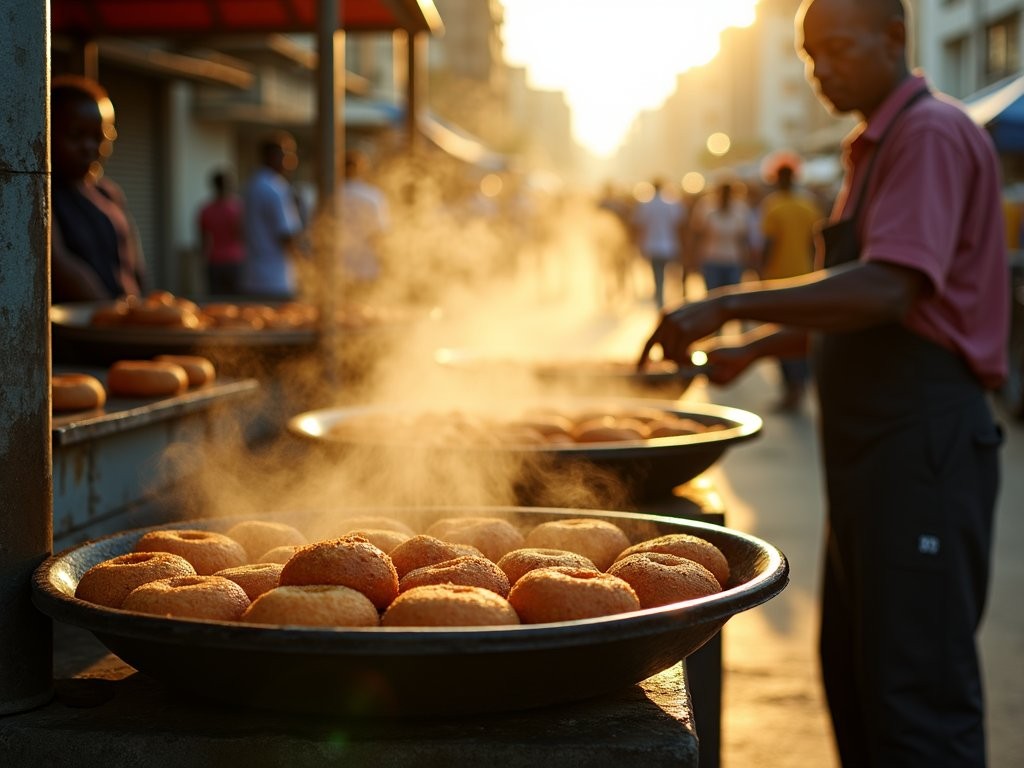
💡 Pro Tips
- Download offline maps before your trip as data service can be spotty in some areas
- Carry small bills (Tanzanian shillings) as street vendors rarely have change for large notes
- Learn basic Swahili food terms—'asante' (thank you) and 'tafadhali' (please) go a long way with vendors
Coastal Delights: Seafood Straight from the Indian Ocean
If there's one food experience that defines Dar es Salaam, it's the seafood. The city's relationship with the Indian Ocean isn't just geographical—it's culinary, cultural, and spiritual. My marathon training schedule typically keeps me on a strict protein rotation, but here, I surrendered completely to the sea's bounty.
The Kivukoni Fish Market near the ferry terminal operates on a rhythm as old as the city itself. Arriving just after 7 AM—when the morning catch comes in but before the day's heat intensifies—I found myself mesmerized by the organized chaos. Fishermen unloaded everything from hand-sized sardines to massive tuna and kingfish. The market follows a fascinating hierarchy: wholesalers bid first, restaurants second, and ordinary citizens last.
But the real magic happens at the market's periphery, where makeshift grills transform the morning's catch into immediate meals. For less than $3 USD, I feasted on a whole grilled fish, seasoned simply with salt, lemon, and a fiery pili-pili sauce that had me reaching for my water bottle repeatedly.
"This fish was swimming three hours ago," explained Juma, the grill master who'd taken a liking to me after I complimented his technique in my limited Swahili. He showed me how to eat like a local—using just the right hand, pulling the delicate white flesh from the bones with practiced movements.
For those seeking a slightly more formal seaside dining experience, the string of beach restaurants along Coco Beach offer plastic chairs in the sand and seafood platters featuring prawns, calamari, octopus, and fish—all grilled to perfection and served with coconut rice. On Friday evening, these spots fill with local families and become the perfect place to watch the sunset while digging your toes into the sand.
I've eaten seafood on five continents, but there's something transcendent about Dar's approach—minimal intervention, maximum freshness, and an understanding that the ocean's gifts need little embellishment. Just remember to bring your reef-safe sunscreen if you're planning to combine your seafood feast with beach time; the equatorial sun here is unforgiving, especially to runners who think they're already tan enough!
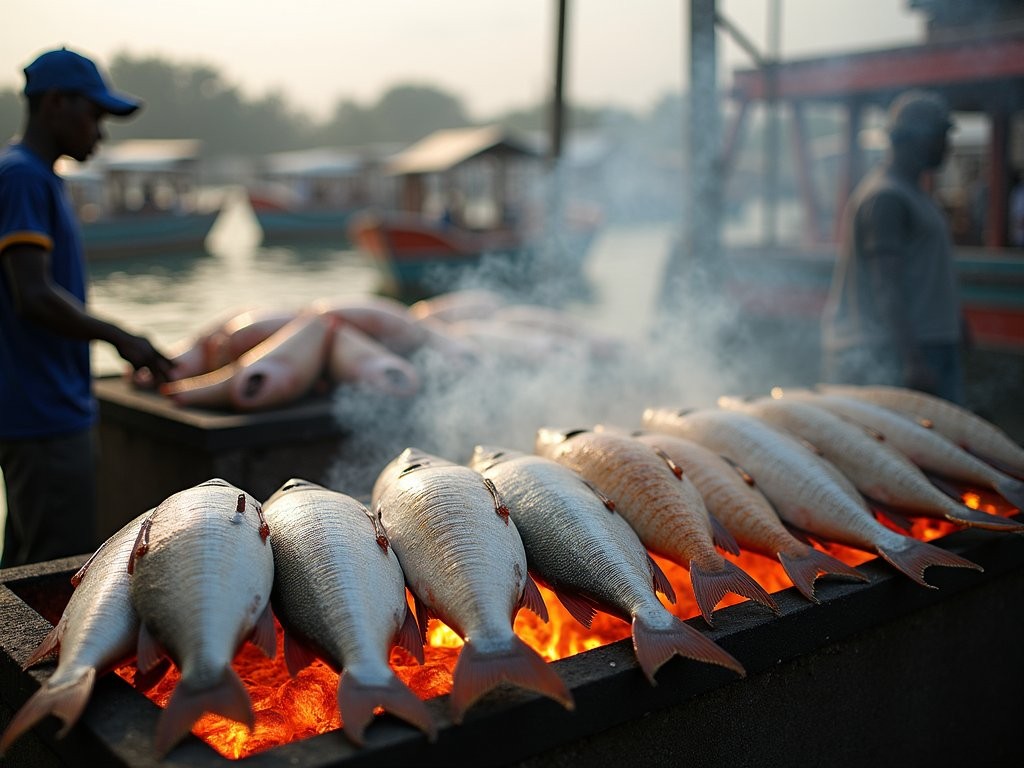
💡 Pro Tips
- Visit fish markets early (6-8 AM) for the best selection and experience
- At beach restaurants, prices are rarely displayed—confirm the cost before ordering to avoid surprises
- Seafood is generally safe to eat when properly cooked, but avoid raw offerings unless at high-end establishments
Spice Islands Influence: Zanzibari Flavors in the City
Tanzania's spice heritage—particularly from nearby Zanzibar—infuses Dar's street food with complex flavor profiles that belie their humble presentations. Having visited monasteries across Asia where monks carefully tend to herb gardens, I've developed an appreciation for how spices can be both medicine and meditation. In Dar, this philosophy comes alive in every bite.
The Kariakoo Market, the city's largest, houses a labyrinthine spice section where vendors sit behind pyramids of turmeric, cardamom, cloves, and dozens of spice blends with names I couldn't pronounce but flavors I'll never forget. While technically not street food, the market's food stalls offer a crash course in how these spices translate to Tanzanian cuisine.
Here I discovered urojo, often called "Zanzibar mix"—a tangy potato soup topped with crispy bhajias (fritters), boiled eggs, cassava flakes, and a mix of chutneys and hot sauces that create a symphony of textures and flavors. At just 3,000 Tanzanian shillings (roughly $1.30), it's possibly the best value culinary experience I've had anywhere.
"Every family has their own recipe," explained Mama Fatma, whose urojo stand had been recommended by my guesthouse host. "Mine has sixteen spices." When I asked which ones, she laughed and tapped her temple. "Trade secret!"
The Zanzibari influence extends to the city's love affair with pilau—spiced rice cooked with meat, distinct from its Indian cousin biryani by its darker color and intense clove and cinnamon notes. The best pilau I found was at a sidewalk stand near the Mnazi Mmoja grounds, where a huge pot bubbled all afternoon, the fragrance creating an irresistible gravity that pulled in customers from blocks away.
For those looking to bring these flavors home, the spice markets offer vacuum-sealed packages that comply with most countries' customs regulations. I filled half my packing cubes with various spice blends, which have since transformed my post-run recovery meals back home in Toronto.
My monastery visits have taught me that food preparation can be a form of meditation, and nowhere is this more evident than watching Dar's street chefs work with spices—measuring by eye, mixing by feel, creating consistent magic from memory rather than recipes.
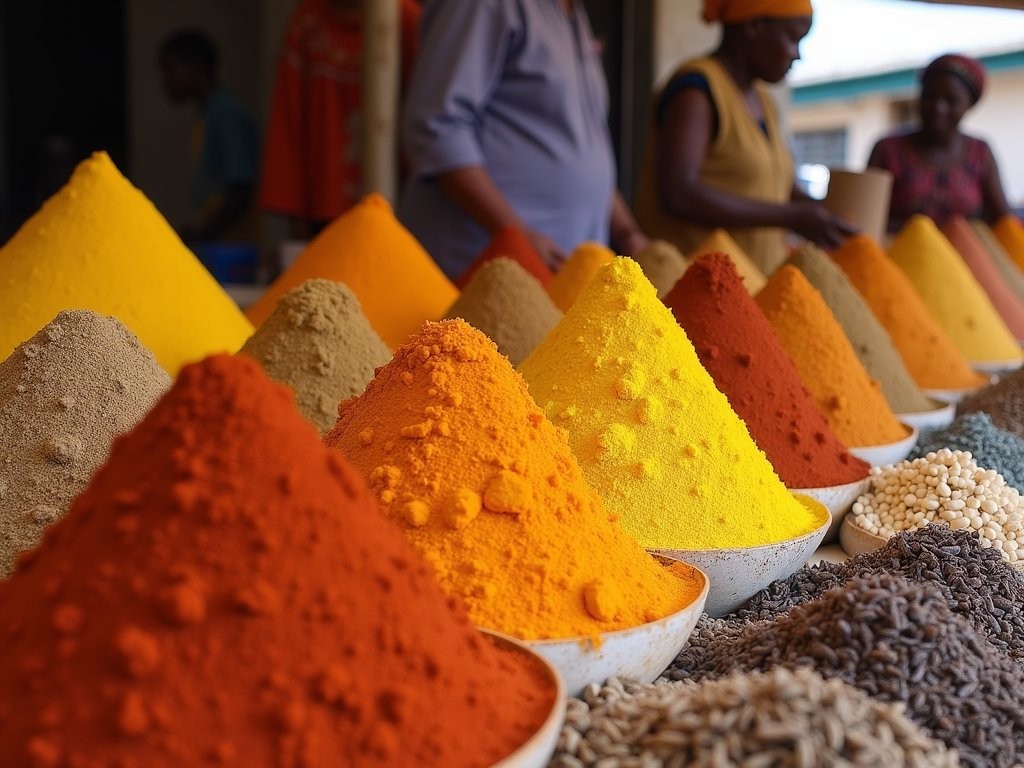
💡 Pro Tips
- Ask before photographing spice vendors or their goods—many appreciate the courtesy of permission
- Spices are much cheaper in local markets than at airport shops or tourist areas
- If buying spices to take home, confirm current customs regulations for your country before purchasing large quantities
Street Snacks & Finger Foods: The In-Between Meals
Marathon running has taught me that constant fueling beats three large meals, and Dar's street food scene seems designed for this grazing approach to nourishment. Between major meals, the city offers a constellation of snack options that reflect its multicultural heritage and provide windows into everyday Tanzanian life.
My favorite discovery was kashata—coconut sweets that come in various forms, from peanut bars to caramelized treats that taste like the love child of toffee and macaroons. Sold by women who often make them in home kitchens, these sweets cost pennies but deliver rich cultural heritage in every bite. They became my pocket fuel during long walking explorations, reminiscent of the energy chews I use during marathon training but infinitely more delicious.
Samosas here deserve special mention—not just for their perfect triangular form and crisp exterior, but for how they represent the Indian Ocean trade routes that have shaped East African cuisine for centuries. The Tanzanian version often includes minced beef or chicken with a distinctive blend of spices different from their Indian counterparts. I found the best ones at a small stand near the Askari Monument, where three generations of a family worked in coordinated harmony, frying batches to golden perfection.
For plant-based snackers, muhogo (cassava chips) and viazi karai (spiced potato fritters) provide satisfying crunch with complex flavors. Street vendors typically fry these to order, ensuring peak crispness. At around 1,000 Tanzanian shillings per portion (about $0.45), they're both economical and filling.
One afternoon, following the sound of sizzling oil near the National Museum, I discovered mitai—sweet rice flour dough balls with cardamom and coconut that reminded me of New Orleans beignets but with a distinctly East African flavor profile. The vendor noticed me taking a photo of his cooking process and insisted I try one for free. That generosity—the pride in sharing culinary traditions—is as much a part of Dar's food culture as the ingredients themselves.
Hydration is crucial in Dar's heat, especially between snacking adventures. While bottled water is widely available, fresh coconut water sold by machete-wielding vendors offers both refreshment and entertainment as they skillfully hack open the green husks with theatrical flourish. I tracked my daily routes using my GPS watch, which helped me monitor both my walking distance and hydration needs in the tropical climate—essential data for anyone combining serious eating with urban exploration.

💡 Pro Tips
- Street snacks are often freshest mid-morning and mid-afternoon when vendors prepare new batches
- Watch for vendors with high turnover—it ensures freshness and reduces food safety concerns
- Carry hand sanitizer or wet wipes for before and after enjoying finger foods
Nighttime Feasts: When Dar's Streets Really Come Alive
As the equatorial sun sets with startling swiftness around 6:30 PM, Dar es Salaam undergoes a culinary transformation. Streets that hosted fruit vendors and snack stalls during daylight hours now welcome more elaborate cooking setups—portable grills, bubbling pots, and makeshift seating areas illuminated by string lights or lanterns.
This evening metamorphosis reminds me of monastery courtyards I've visited across Asia, where spaces serve different functions throughout the day, adapting to the community's changing needs. In Dar, the night brings communal dining experiences that reveal the true heart of Tanzanian hospitality.
My most memorable evening meal came from the Forodhani Night Market that materializes near the Kivukoni waterfront. Here, the signature dish is nyama choma—grilled meat (usually beef, goat, or chicken) cooked over open flames and served with a side of kachumbari (fresh tomato and onion salad) and ugali (a stiff cornmeal porridge that serves as Tanzania's staple starch).
The ritual surrounding nyama choma is as important as the food itself. You select your meat, negotiate the price by weight, then wait as it's prepared specifically for you. This creates a natural social atmosphere as strangers gather around grills, sharing space and conversation while their orders cook.
"You're from Canada? Running marathons?" asked Emmanuel, a local teacher who shared my table. When I mentioned my interest in how communal spaces reveal cultural values, he nodded enthusiastically. "This is our real living room," he gestured to the busy market. "Not inside our houses. Here is where community happens."
The night markets also showcase Tanzania's coastal position through dishes like mchuzi wa samaki (fish curry) and pweza wa nazi (octopus in coconut milk), served in generous portions with rice or chapati for soaking up the flavorful sauces.
For the budget traveler, evening meals offer the best value. Most substantial dishes cost between 5,000-12,000 Tanzanian shillings ($2-5 USD), with enough food to satisfy even my marathon-training appetite. I tracked my spending using my travel wallet, which helped me manage different denominations of shillings while keeping my cards secure—essential in crowded night markets.
Beyond the food, nighttime brings musical elements to Dar's street dining scene. Impromptu performances, portable speakers playing bongo flava (Tanzanian hip hop), and the rhythmic calls of vendors create a soundtrack as layered as the flavors. Having spent years exploring record shops across continents, I found myself recording these ambient sounds—the authentic beats that no tourist playlist could replicate.
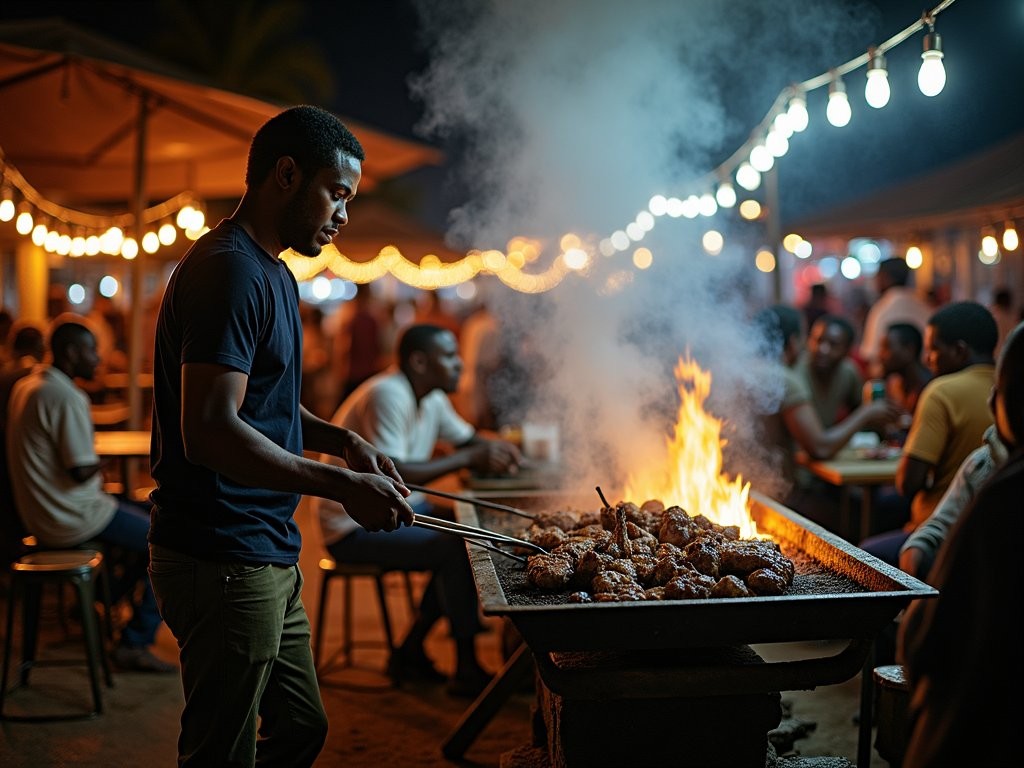
💡 Pro Tips
- Night markets are generally safe but keep valuables secure and be aware of your surroundings
- Bring your own napkins or wet wipes as these are rarely provided
- Most night food vendors begin setting up around 6 PM and serve until 10 PM or later
Sweet Endings: Desserts with Cultural Crossroads
In my years of marathon training, I've developed both a disciplined relationship with sugar and a deep appreciation for cultural desserts that transcend mere sweetness. Dar es Salaam's street desserts reflect the city's position at the crossroads of African, Middle Eastern, and Indian influences—creating confections that tell complex stories of trade, colonization, and cultural exchange.
The most ubiquitous sweet treat is mandazi, which I'd already fallen for at breakfast but discovered takes on different characteristics throughout the day. Morning versions tend to be plain or lightly spiced, while evening offerings might include cardamom, coconut, or even ground nuts. At Mwenge Craft Market, I found a vendor selling mandazi filled with chocolate—a contemporary twist that somehow felt both innovative and authentic.
Vitumbua—rice flour pancakes with coconut milk—became my post-dinner ritual, especially from a grandmother-granddaughter team near my guesthouse who cooked them in special dimpled pans over charcoal. Served hot with a dusting of sugar or drizzle of honey, they have a delightful springiness and subtle fermented tang that balances the sweetness.
The Indian influence on Dar's dessert landscape appears most clearly in the various halwa and barfi sweets sold in small shops throughout the city. These dense, fragrant confections—often flavored with cardamom, saffron, or rose—offer a more sophisticated sweetness than their Western counterparts. Near the Hindu temples in Upanga, I discovered a shop selling jalebi—deep-fried spirals of batter soaked in saffron syrup that provide an intense sugar rush perfect for refueling after long walks.
Perhaps most interesting are the desserts that showcase Tanzania's agricultural bounty. Fresh tropical fruits transformed into simple but extraordinary experiences: charcoal-grilled pineapple brushed with honey and cinnamon; paper-thin slices of green mango sprinkled with chili and salt; coconut flesh scooped directly from the shell after drinking its water.
One evening near the Askari Monument, I spotted a vendor with a unique setup—a hand-cranked ice shaver creating mounds of fluffy ice topped with homemade syrups in vibrant colors. This Tanzanian version of shave ice cost just 1,000 shillings (about $0.45) but provided both refreshment and a gathering point where children and adults alike congregated in the evening heat.
To capture these ephemeral sweet moments, I relied on my smartphone rather than my usual camera gear. The phone gimbal I brought helped me shoot steady video of dessert preparations even in crowded market conditions—allowing me to document these traditional techniques without disrupting the authentic experience.
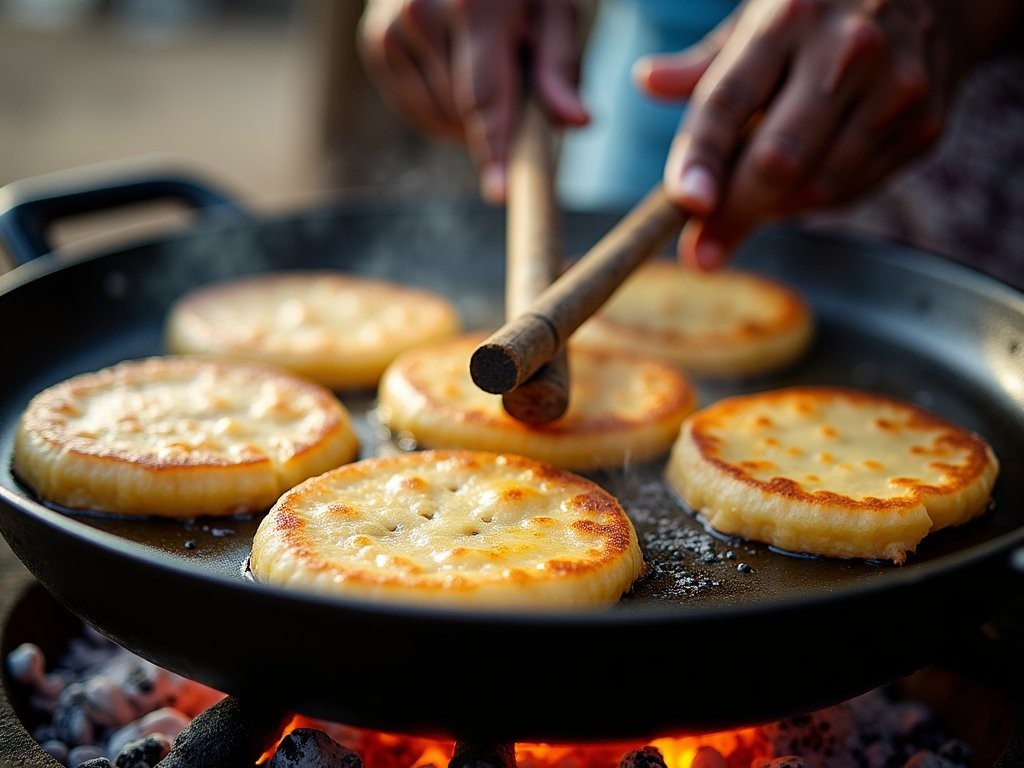
💡 Pro Tips
- Dessert portions are often generous—consider sharing to sample more varieties
- Fresh fruit desserts are usually the safest option for sensitive stomachs
- Sweet treats are often most affordable from street vendors rather than cafes or restaurants
Final Thoughts
As my weekend street food safari in Dar es Salaam came to an end, I found myself sitting at a plastic table near the Kivukoni ferry terminal, watching the sunset paint the harbor in gold while savoring one last plate of grilled prawns. The marathon runner in me had calculated: over 48 hours, I'd walked nearly 30 miles and consumed what felt like a tour of East Africa's entire culinary heritage. But beyond the calories and steps, I'd collected something far more valuable—stories exchanged over shared tables, cooking techniques demonstrated with patient pride, and the rhythmic poetry of a city that speaks most honestly through its food.
Dar es Salaam may not top many culinary destination lists, but that's precisely what makes it special. The lack of pretension, the genuine surprise and delight vendors express when a foreigner appreciates their craft, creates connections that no fine dining experience could match. For the budget traveler seeking authentic cultural immersion, Dar's streets offer a feast not just for the stomach but for the soul.
When you visit—and I hope you will—come hungry, but also come curious. Ask questions. Learn names. Share tables with strangers. The true flavor of Tanzania isn't just in its spices but in its spirit of community that transforms every meal into an invitation and every bite into belonging.
✨ Key Takeaways
- Dar es Salaam offers one of Africa's most diverse and affordable street food scenes, reflecting centuries of cultural exchange
- Following local crowds is the best strategy for finding authentic, safe street food experiences
- Morning fish markets and evening grilled meat stalls provide the bookends to a perfect day of culinary exploration
- Budget travelers can experience the full spectrum of Tanzanian cuisine for under $15 USD per day
📋 Practical Information
Best Time to Visit
Year-round, though June-October offers less humidity and rainfall
Budget Estimate
$30-50 USD per day including accommodation, transportation and food
Recommended Duration
2-3 days for food exploration
Difficulty Level
Beginner

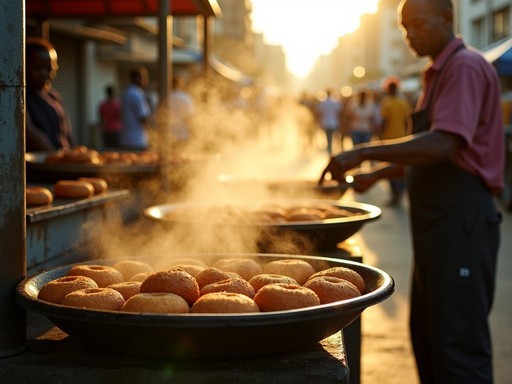

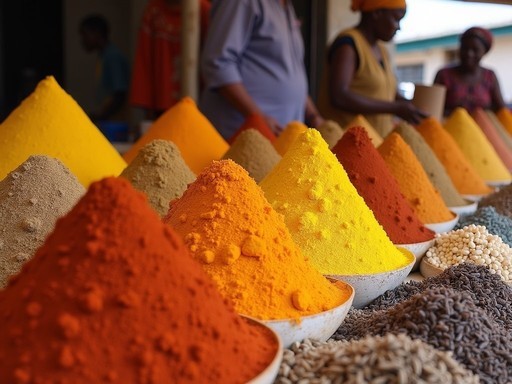

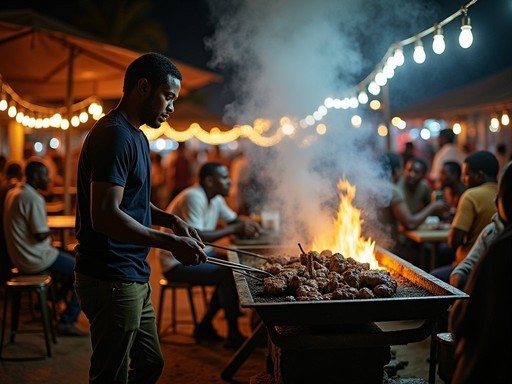
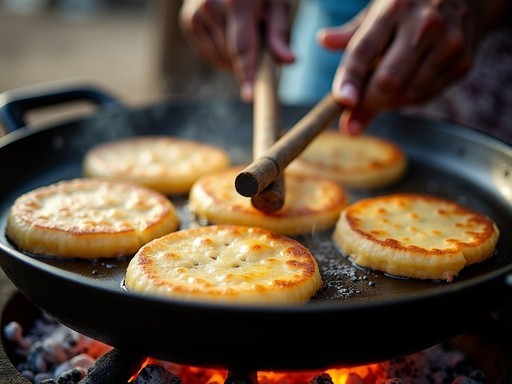


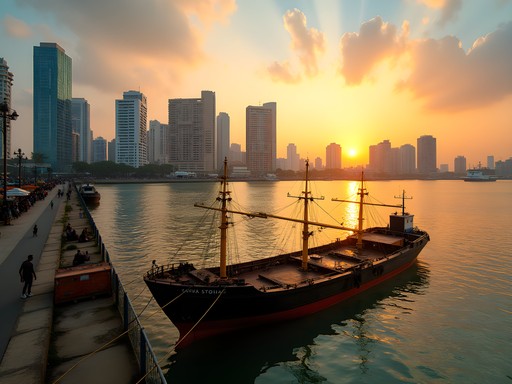
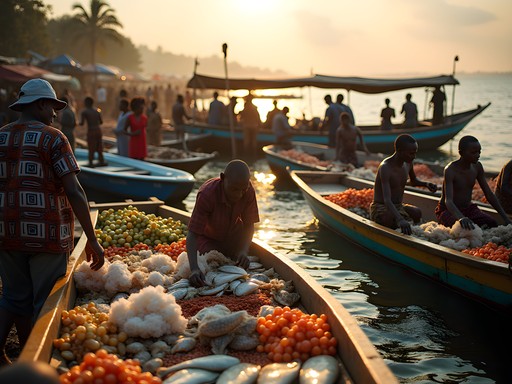






Comments
nomadking
Great post! Heading to Tanzania next month and definitely want to try some street food in Dar. Any tips on which areas are safest for a first-timer to explore the food scene? Also, did you have any stomach issues after eating street food there?
Mason Sullivan
Hey @nomadking! I'd recommend starting around Kivukoni or Forodhani Garden area - busy, well-lit, and popular with both locals and tourists. I had zero stomach issues, but I always look for busy stalls where food is cooked fresh in front of you. Carry hand sanitizer and small bills. Enjoy!
roamwalker
Just adding to Mason's advice - the area near Slipway shopping center has some great food stalls too and feels very accessible for first-timers.
nomadking
Thanks both! This is super helpful. Can't wait to try those mishkaki skewers.
John Hart
Excellent breakdown of Dar's food scene, Mason. I spent three months there in 2023 documenting East African cuisine, and your analysis is spot-on. The Zanzibari influence creates a unique fusion you won't find elsewhere. One addition: try the vitumbua (rice pancakes) from the ladies near Kivukoni Fish Market around 6am - they sell out by 7:30. The coastal-spice combination is fascinating from an anthropological perspective - you can literally taste the trade history in every bite. I tracked 47 distinct street food items in Dar, and the pilau rice variations alone tell a complex cultural story. Did you make it to Kariakoo Market for the dawn breakfast scene?
Mason Sullivan
Thanks John! I missed the vitumbua at Kivukoni - that's going on the list for next time. I did make it to Kariakoo but only mid-morning. Sounds like I need to get there earlier! Your three-month study sounds incredible.
John Hart
Dawn at Kariakoo is where the real magic happens. The mandazi are still hot and the chai is being brewed in giant pots. I documented everything in my field notebook which was perfect for the humidity there. Looking forward to your next food adventure!
roamwalker
Those mishkaki skewers look amazing! Definitely adding Dar es Salaam to my food bucket list.
Mason Sullivan
Thanks @roamwalker! The mishkaki were honestly life-changing - perfect char on the outside and so tender inside. Worth the trip alone!
roamwalker
Did you find any good vegetarian options there too?
Mason Sullivan
Absolutely! The chapati with vegetable curry was everywhere and delicious. Also try the muhogo (cassava with coconut) - simple but so good.
dreamninja
Those mandazi look amazing! Making me hungry just looking at the pics!
Timothy Jenkins
Brilliant post that captures the essence of Dar's food culture! One spot I'd add to your list is the night market that pops up along Msasani Peninsula on weekends - slightly more upscale street food but still authentic. The Zanzibari influence you mentioned is fascinating; I spent time researching the spice trade routes for my blog and the culinary legacy is incredibly rich. For anyone visiting, I highly recommend learning a few Swahili food terms before going - 'tafadhali' (please) and 'asante' (thank you) go a long way, but also 'kitamu' (delicious) will make any vendor smile!
coollegend
That photo of the spice market is incredible! The colors pop so much. What camera do you use?
islandclimber
Those samosas look incredible! I'm planning my first trip to East Africa next year. Is Dar es Salaam worth spending a few days in or is it just a stopover city on the way to Zanzibar/safari?
Timothy Jenkins
Absolutely worth 2-3 days! Beyond the food scene Mason describes, the National Museum is excellent, and Coco Beach on Sundays is a cultural experience in itself. The city has a completely different vibe from the tourist areas. Just be prepared for the traffic!
islandclimber
Thanks Timothy! Adding it to the itinerary for sure.
Stephanie Romano
Mason, your post brought back such wonderful memories! We took our kids (10 and 8) to Tanzania last summer and were initially hesitant about trying street food with them. But our guide took us to Kariakoo Market and it became their favorite experience of the trip! My daughter still talks about the mishkaki (beef skewers) and my son couldn't get enough of the fresh sugarcane juice. For families worried about trying street food with kids, I found that starting with grilled items and fruits with peels was a good introduction. We used hand sanitizer religiously and had zero issues. The vendors were so kind to our children too - often giving them extra little treats!
winterninja
Man, this post takes me back! I spent two weeks in Dar last year and the street food scene was definitely a highlight. That grilled octopus near Kivukoni was life-changing. Did you try the cassava chips with that spicy peanut sauce? I'm still dreaming about it. The mix of Indian, Arabic and African flavors there is something else. Mason, did you ever feel any stomach issues from the street food or did you have any safety tips for choosing vendors?
dreamninja
I'm heading there next month and a bit worried about getting sick. Any tips?
winterninja
Look for busy stalls with locals eating there. That's always been my rule of thumb. And bring some stomach meds just in case!
wanderlustchamp
Those Zanzibari spices are no joke! Still remember that burn lol
Venture X
Premium card with 2X miles, $300 travel credit, Priority Pass